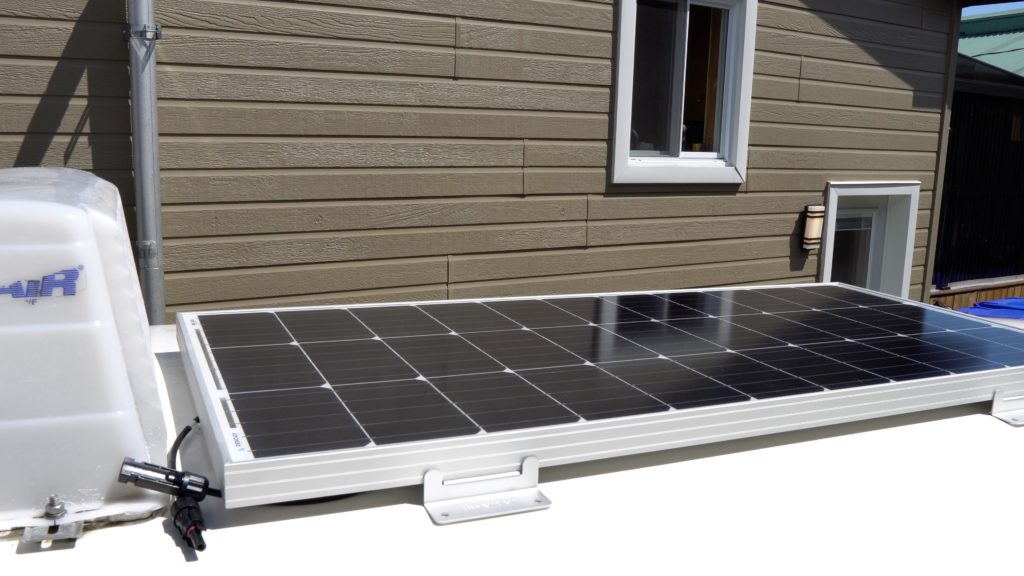The moment when we ask ourselves the question “What solar panels, inverter and battery should we install on our trailer?” has arrived! For those of you following our webseries, our trailer to electric conversion project is quickly taking shape and after removing the propane accessories to make our trailer 100% electric, we needed to choose the right electronics that fit our needs and our trailer!
One of the important things is that we want to use an inverter to power an induction cooker, a fan/heater and a mini tankless water heater among other things. We also want to have the possibility to add batteries in parallel to increase our autonomy if needed.
The battery
To choose the battery, I did several researches on the different types of batteries: Acid, AMG and Lithium.
The Acid battery did not suit me for the following three reasons:
- Its weight is heavier than the other types;
- It gives off gases when recharging, and since I wanted to install it indoors, I didn’t want to risk exploding or making ventilation hatches.
- By its ability to better manage its load with an inverter compared to other types.
As I am a big user of Amazon, I did several searches to find the best battery avoiding the “dubious Chinese” models. While I didn’t want to buy THE best, I was looking for a good value with a company that offered service, outside of the Amazon store.
I saw several different brands, but my choice was Renogy, with a 170 amp battery for a price of $850 (on special on Amazon). However, I later learned about the Quebec company Volthium. I would have preferred this brand if I had known it before.
But honestly, I am still very satisfied so far.
https://ca.renogy.com/renogy-lithium-iron-phosphate-battery-12-volt-170ah/
The inverter
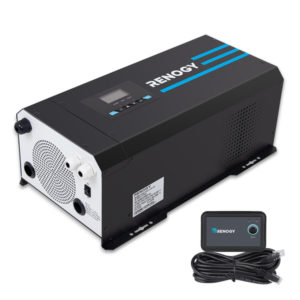 I was looking for an inverter with an optimized sine wave of at least 2000 watts. I wanted to have the ability to have a remote switch. Also, I wanted it to be a 12 volt charger with variable amperage. I chose the Renogy brand inverter to standardize our set.
I was looking for an inverter with an optimized sine wave of at least 2000 watts. I wanted to have the ability to have a remote switch. Also, I wanted it to be a 12 volt charger with variable amperage. I chose the Renogy brand inverter to standardize our set.
https://ca.renogy.com/2000w-12v-pure-sine-wave-inverter-charger-w-lcd-display/
Charger and solar panels
There are two types of solar chargers, either the MPPT type or the PWM type.
The solar panels always produce a voltage higher than 12 volts and that of the batteries. To charge a battery without damaging it, we must adjust the voltage coming from the panels to the ideal voltage of the battery.
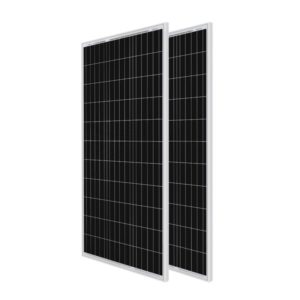
For example, for a deep-cycle lead-acid battery, you need a voltage of up to 14.4 V, then the controller drops the voltage to ± 13.5 V.
If you are using high voltage solar panels, or if you are connecting panels in series, the use of MPPT is essential to avoid wasting excess voltage. PWM chargers are less efficient in this type of application.
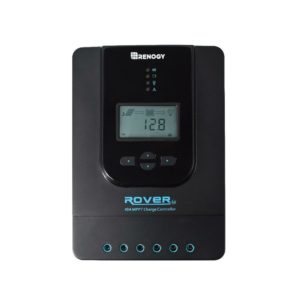 I chose to install an MPPT charger connected to my two 100 watt solar panels, while leaving me the option of adding a portable 100 watt or more panel to an external outlet so I could position it where there is sun. Once again, I chose the Renogy brand.
I chose to install an MPPT charger connected to my two 100 watt solar panels, while leaving me the option of adding a portable 100 watt or more panel to an external outlet so I could position it where there is sun. Once again, I chose the Renogy brand.
https://ca.renogy.com/renogy-li-rover-40-amp-mppt-solar-charge-controller/
https://ca.renogy.com/2pcs-100-watt-12-volt-monocrystalline-solar-panel-compact-design/
https://ca.renogy.com/renogy-100-watt-eclipse-solar-suitcases-w-o-controller/
Monitoring Mobile Apps
Considering that I have installed my MPPT controller in a more or less accessible place, I decided to install a Bluetooth transmitter that will allow me, via a mobile application, to know the state of solar charge and battery .
https://ca.renogy.com/renogy-bt-1-bluetooth-module/
Voltmeter / ammeter
Knowing the state of charge of your battery and the consumption are two important aspects for me.
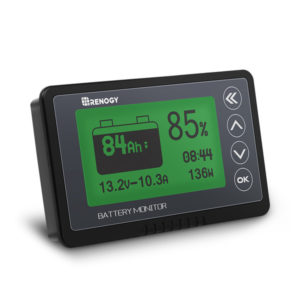
The battery is measured mainly with the voltmeter, in parallel, and the energy expenditure is measured in series through a resistor called a “shunt”. The device also allows me to see in voltage / amperage the load (+) as well as for the consumption with the indicator (-). It also allows to estimate according to the consumption the time in hour / minute.
https://ca.renogy.com/500a-battery-monitor/
DC / DC charger
Charging the batteries on the road is also interesting especially in cloudy or bad weather. However, with the Tesla Model Y, the towing cables are more or less adapted to the
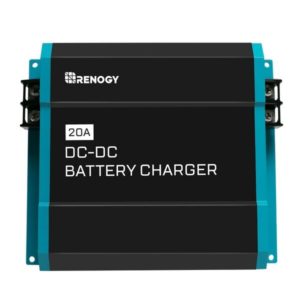
lithium.
This is why I opted for a DC To DC charger made for this type of situation.
It allows me to limit the amperage and to isolate the lead-acid battery of the Tesla vs lithium of the trailer.
Also, having very little information, I chose a 20 amp model so as not to overuse the original wiring. It’s on the limit, but better than nothing, because it adds protection.
https://ca.renogy.com/renogy-12v-dc-to-dc-on-board-battery-charger/

